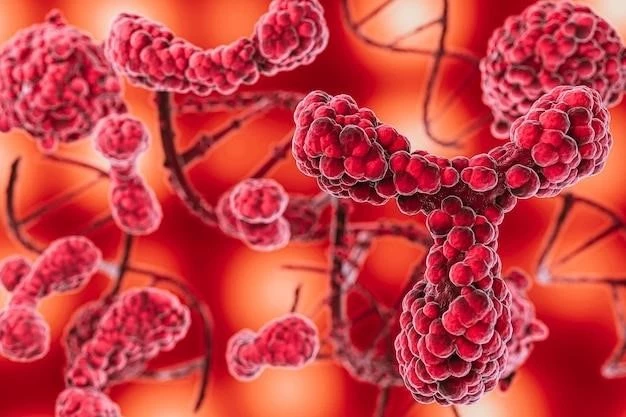Overview of Acute Myeloblastic Leukemia
Acute Myeloblastic Leukemia is a fast-growing cancer of the blood and bone marrow.
Definition and Characteristics
Acute Myeloblastic Leukemia is a type of leukemia that starts in the bone marrow and affects blood cell production. It is characterized by quickly dividing abnormal myeloblasts, leading to a shortage of normal blood cells. Common features include anemia, susceptibility to infections, and bleeding tendencies due to low platelet count.

Treatment Options for Acute Myeloblastic Leukemia
Chemotherapy and targeted therapy are commonly used to treat Acute Myeloblastic Leukemia.
Chemotherapy
Chemotherapy for Acute Myeloblastic Leukemia involves using powerful drugs to kill leukemia cells. It can be given orally or intravenously and aims to destroy cancer cells throughout the body. The treatment may cause side effects such as hair loss, nausea, and increased risk of infections, as it targets both cancerous and healthy cells.
Targeted Therapy
Targeted therapy for Acute Myeloblastic Leukemia is a treatment that uses drugs or other substances to precisely identify and attack cancer cells while causing less harm to normal cells. This approach focuses on specific molecules involved in the growth and survival of leukemia cells. Targeted therapy can have fewer side effects compared to traditional chemotherapy.
Symptoms and Diagnosis of Acute Myeloblastic Leukemia
Early symptoms may include fatigue, shortness of breath, and increased risk of infections.
Common Symptoms
Common symptoms of Acute Myeloblastic Leukemia include fatigue, pale skin, frequent infections, easy bruising or bleeding, and shortness of breath. Patients may also experience weight loss, fever, and bone pain. These symptoms are due to the low numbers of normal blood cells and the presence of abnormal leukemia cells in the bone marrow.
Diagnosis Process
The diagnosis of Acute Myeloblastic Leukemia involves a series of tests including blood tests, bone marrow aspiration and biopsy, and genetic testing. Blood tests reveal abnormal cell counts, while bone marrow tests help to confirm the type of leukemia present. Genetic testing can identify specific mutations that influence treatment options. A thorough diagnosis is crucial for determining the most effective course of treatment for each individual.
Understanding Leukemia Subtypes
Leukemia comprises different subtypes classified based on the type of blood cells affected.
Classification of Leukemia
Leukemia is classified into four main types⁚ Acute Myeloid Leukemia (AML), Chronic Myeloid Leukemia (CML), Acute Lymphoblastic Leukemia (ALL), and Chronic Lymphocytic Leukemia (CLL). These subtypes are based on the specific blood cell type affected and how quickly the disease progresses. Understanding the subtype is crucial for determining the most appropriate treatment approach.
Impact of Acute Myeloblastic Leukemia on Bone Marrow
Acute Myeloblastic Leukemia disrupts normal bone marrow function, leading to decreased production of healthy blood cells.
Bone Marrow Function
Bone marrow is responsible for producing red blood cells, white blood cells, and platelets. In Acute Myeloblastic Leukemia, abnormal myeloblasts replace the normal blood cell precursors. This disruption impairs the bone marrow’s ability to generate healthy blood cells, leading to anemia, increased susceptibility to infections, and bleeding issues.
Genetic Factors in Acute Myeloblastic Leukemia
Genetic mutations play a crucial role in the development and progression of Acute Myeloblastic Leukemia.
Genetic Mutations
Acute Myeloblastic Leukemia is associated with various genetic mutations, such as mutations in the FLT3, NPM1, and IDH1 genes. These mutations can drive abnormal cell growth and interfere with normal blood cell development. Identifying specific genetic changes in leukemia cells can help tailor treatments to target these mutations more effectively, improving patient outcomes.
Managing Side Effects of Leukemia Treatment
Managing side effects involves addressing symptoms like nausea, fatigue, and increased infection risk.
Common Side Effects
Common side effects of leukemia treatment include fatigue, nausea, hair loss, anemia, increased risk of infections, and easy bruising or bleeding. Patients may also experience loss of appetite, inflammation of the mouth, and emotional distress. Managing these side effects effectively is crucial for enhancing the quality of life during treatment.
Research Advances in Acute Myeloblastic Leukemia
Innovative research is focusing on targeted therapies and immunotherapies to improve treatment outcomes.
Ongoing Research Efforts
Ongoing research in Acute Myeloblastic Leukemia includes investigating new drug combinations, enhancing bone marrow transplant techniques, and exploring biomarkers for personalized treatment. Clinical trials are also evaluating the effectiveness of novel therapies like immunotherapy and targeted drugs. These research efforts aim to advance treatment options and improve outcomes for patients with Acute Myeloblastic Leukemia.
